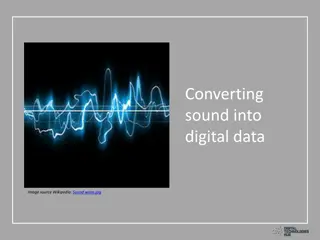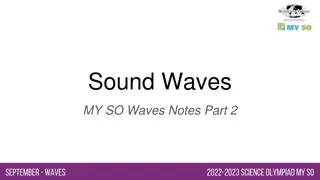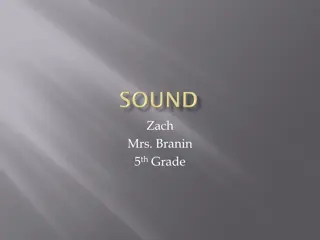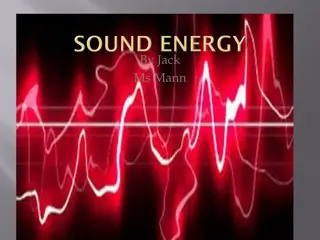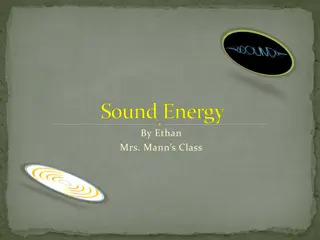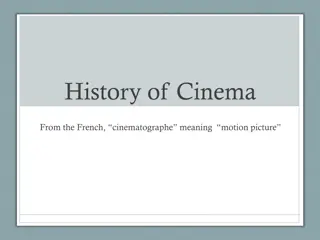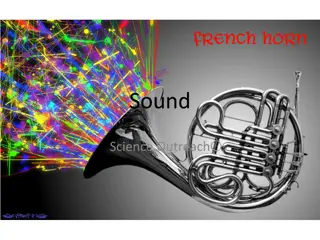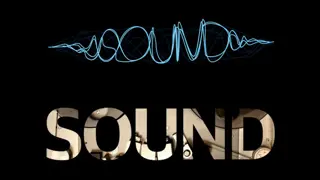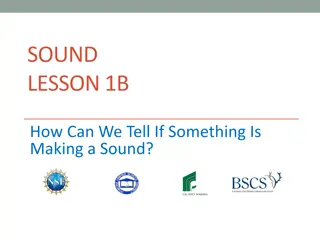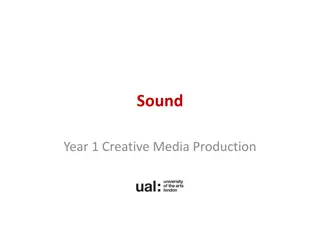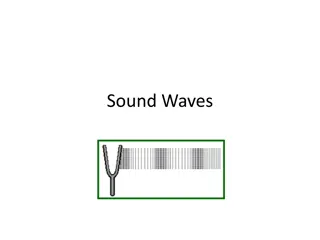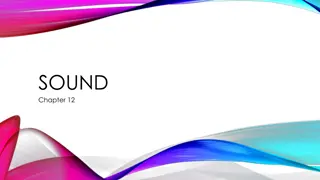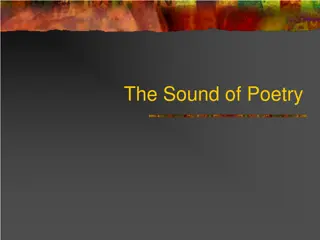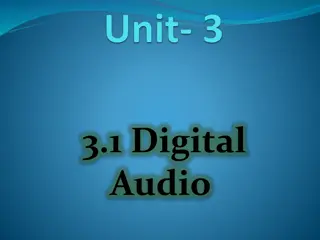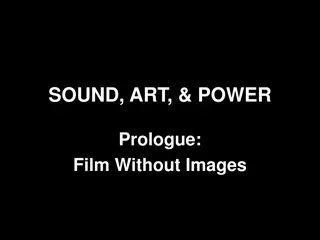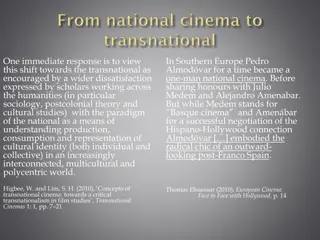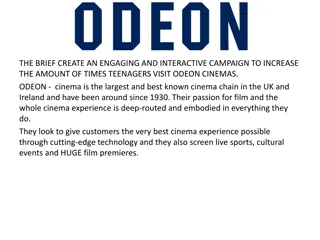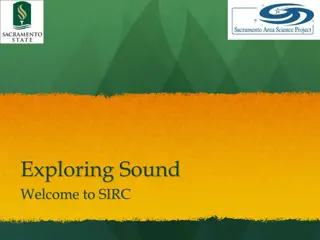Evolution of Sound Technology in Cinema: A Historical Perspective
Explore the transition from silent to sound cinema and the impact of sound technology on early cinema. James Lastra's work on sound in film and the significance of aural perception in modernity are highlighted, along with discussions on performance, inscription, and synchronization in sound imaging technologies. Discover how Lastra approaches the advent of sound and its role in shaping the understanding of film.
Download Presentation

Please find below an Image/Link to download the presentation.
The content on the website is provided AS IS for your information and personal use only. It may not be sold, licensed, or shared on other websites without obtaining consent from the author. Download presentation by click this link. If you encounter any issues during the download, it is possible that the publisher has removed the file from their server.
E N D
Presentation Transcript
I. Silent to Sound Cinema 3. Sound Technology & Early Cinema
James Lastra Professor in Cinema/Media Studies and English at University of Chicago Student of Rick Altman. Published one book on sound in film in 2000
Sound Technology & The American Cinema This book combines a history of modernity with a study of sound Cinema as the prime symbol of modernity 2 basic claims: a) first that aurality has been the unthought in accounts of modernity and that, b) consequently, we have overestimated the hegemony of the visual. (p. 4) Thick epistemology: device, discourse, practice, and institution 1925-1934
Sound and Imaging Technologies in The Late 18th Century Phonograph and the camera; writing and the reproduction of sensory experiences Provide a model of Hollywood s reaction to the possibility of recorded sound later Apparatus theory Performance and inscription: technological representation is never a case of simply seeing or hearing, but of looking and listening. We look and listen forthings, for specific purposes, while the machine s more perfect eyes and ears simply absorb indiscriminately. (p. 91)
How does Lastra approach the coming of sound ?
How does Lastra approach the coming of sound ? What was sound ?
How does Lastra approach the coming of sound ? What was sound ? What was synchronization ?
How does Lastra approach the coming of sound ? What was sound ? What was synchronization ? What was understood as a film ?
Illustrated Song Catalogue, 1906
Expanding the idea of synchronization any fixed or purposeful relationship between sound and image (p. 94) Sound s direct address Producer s dilemma Funning / articulation
Rebirth of A Nation (2005-8) Live performance and DVD by Paul D. Miller (a.k.a. DJ Spooky that subliminal kid)
Rebirth of A Nation (2005-8) Live performance and DVD by Paul D. Miller (a.k.a. DJ Spooky that subliminal kid) As a contemporary example of funning?
Rebirth of A Nation (2005-8) Live performance and DVD by Paul D. Miller (a.k.a. DJ Spooky that subliminal kid) As a contemporary example of funning? In what ways does it correspond to pre- 1910 film sound?
Rebirth of A Nation (2005-8) Live performance and DVD by Paul D. Miller (a.k.a. DJ Spooky that subliminal kid) As a contemporary example of funning? In what ways does it correspond to pre- 1910 film sound? In what ways does it not?
DJ Spooky performing Rebirth of a Nation at Chicago Museum of Contemporary Art November 2004
Funning satirizes scenes or entire films through musical puns, comments on the picture through the title, lyrics, or melody of the accompanying music. (p. 112) Catered to particular audiences and their prejudices Drew attention to the musician s cleverness/stupidity Fractured the film s uniformly coherent address Provides meta/narrative pleasure and commentary for (ethnic) audiences
The performative tradition, allied to a more topographic and less narrative approach to the image, tended to treat the image as a pretext for the gratuitous production of sound. Deriving its impetus from vaudeville, it stressed comic accentuation and an intermittent, punctuated temporality, resulting in an antinarrative and antipsychological form of humorous attention grabbing. The later, and ever more dominant, tradition stressed a rigid hierarchy in providing sound effects, separating the image into zones of importance and unimportance. (p. 110)
The performative tradition, allied to a more topographic and less narrative approach to the image, tended to treat the image as a pretext for the gratuitous production of sound. Deriving its impetus from vaudeville, it stressed comic accentuation and an intermittent, punctuated temporality, resulting in an antinarrative and antipsychological form of humorous attention grabbing. The later, and ever more dominant, tradition stressed a rigid hierarchy in providing sound effects, separating the image into zones of importance and unimportance. (p. 110)
Summary: what became the dominant idea of sychronization in Hollywood? Realism vs. performative tradition Articulation synchronization as performance (See p. 121) Standardization assumes the norms of a middle class, white spectatorship A form that stresses absolute continuity of the music
Standards and Practices in Classical Hollywood Sound Films 1926-34: the most extensive transformation in technology, personnel, formal conventions, and mode of production in the history of American cinema Hollywood + phonography/telephony industries - conflict in two systems of representing sonic realism
Formal unity and narrative plausibility vs. perceptual realism Realism: prime site of cultural struggle and appropriation (p. 158) Workplace relations were worked out, in part, in the field of aesthetics
The Sound Engineer/Technician Professionally under siege? Joseph Maxfield, Harry Olson, Frank Massa technicians/researchers from the phonography/telephony industries (e.g Bell Lab s ERPI) The invisible auditor (concert / phonography model) Blamed for delays and inefficiencies on set: the group of workers with less institutional power were required to expend a great deal of energy simply to avoid a loss of prestige and work place autonomy. (p. 171)
Redefined their function as representation or construction rather than duplication Primacy of dialogue intelligibility A created realism: dialogue recorded separately and placed within an artificial, dubbed, continuous background (dissociation of camera and microphone narration from real perception) The invisible auditor gave way to the ideal auditor. Society of Sound Engineers formed in 1934




